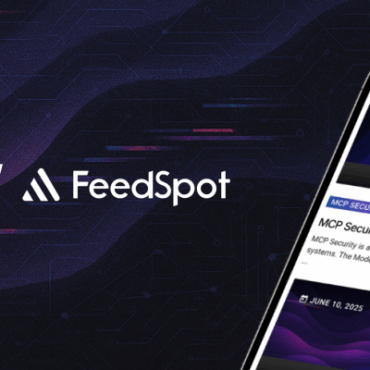How to prevent prompt injection attacks
IBM, April 24, 2024
LLMs present a vulnerability: prompt injections, a substantial security flaw for which there seems to be no straightforward solution. Prompt injections involve the infiltration of malicious content disguised as benign user input into an LLM application. By manipulating the system instructions of the LLM, hackers gain control over the application, enabling them to execute various nefarious activities such as data theft or dissemination of misinformation. To mitigate the risk posed by prompt injections, organizations can implement a combination of measures rather than relying on singular solutions. These include cybersecurity best practices, parameterization, input validation and sanitization, output filtering, strengthening internal prompts, least privilege, and human oversight. By prioritizing AI security and adopting a proactive stance towards risk mitigation, businesses can leverage the benefits of AI while safeguarding against potential threats.
Threat Modeling for AI/ML Systems
Linkedin Learning, April 25, 2024
This course aims to equip technologists with a robust framework for anticipating potential threats to AI systems and implementing effective strategies to mitigate them.
Led by instructor Adam Shostack, participants will delve into the intricacies of threat modeling, exploring its role within the realm of machine learning and artificial intelligence. Through a comprehensive overview, individuals will gain insights into various frameworks designed to understand, categorize, and uncover security vulnerabilities. By grasping the fundamentals of threat modeling, participants will learn how to proactively identify potential risks and develop resilient, trustworthy AI systems.
Aegis-AI-Content-Safety-Dataset-1.0
Hugging Face
In the realm of AI safety and security, the Aegis AI Content Safety Dataset emerges as a pivotal resource, comprising approximately 11,000 meticulously annotated interactions between humans and Language and Learning Models (LLMs). Split into 10,798 training samples and 1,199 test samples, this dataset serves as a cornerstone for enhancing the safety and reliability of AI systems. Annotated with Nvidia’s content safety taxonomy, the samples cover a spectrum of categories including hate/identity hate, sexual content, violence, suicide and self-harm, threats, sexual minors, illegal weapons, controlled substances, criminal planning/confessions, personally identifiable information (PII), harassment, profanity, and other content that requires caution. By categorizing and annotating these interactions, the Aegis AI Content Safety Dataset offers invaluable insights into identifying and addressing potential risks associated with AI-generated content.
Findings from the DEFCON31 AI Village Inaugural Generative AI Red Team Challenge
OODALOOP, April 21, 2024
Last year’s inaugural Generative AI Red Team Challenge, held at DEFCON31’s AI Village, offered a groundbreaking glimpse into the vulnerabilities of Language and Learning Models (LLMs). With over 2,200 participants assessing eight LLMs across 21 topics, the challenge shed light on issues of information integrity, privacy, and societal well-being. Notably, successful strategies mirrored traditional prompt engineering, revealing the nuanced interaction between user input and model output. The study also highlighted the inadvertent role of human behavior in inducing biased outcomes, while dispelling notions of LLMs exacerbating radicalization. Moving forward, continued research is essential to understand the societal impact of LLMs, leveraging the challenge’s dataset as a benchmark for future analyses. Through ongoing engagement with the public, stakeholders can navigate the complexities of AI technology responsibly.
7 key questions CISOs need to answer to drive secure, effective AI
Google Cloud, April 26, 2024
As organizations embrace AI, CISOs face a critical task akin to navigating a starship. Google Cloud emphasizes the need for proactive measures to address emerging AI security concerns. Grounded in the Secure AI Framework (SAIF), here are the key questions for CISOs:
How to establish clear guidelines for secure AI usage? What guardrails ensure oversight and risk mitigation? What security measures support AI infrastructure and applications? How to train AI models to resist attacks and maintain data integrity? How to safeguard sensitive data and ensure data provenance? How to adapt governance frameworks to evolving AI technologies? What proactive measures mitigate cybersecurity threats against AI?
Subscribe for updates
Stay up to date with what is happening! Get a first look at news, noteworthy research and worst attacks on AI delivered right in your inbox.




